The Search for the Real First Climbers to Summit Mount Everest—30 Years Before Sir Edmund Hillary
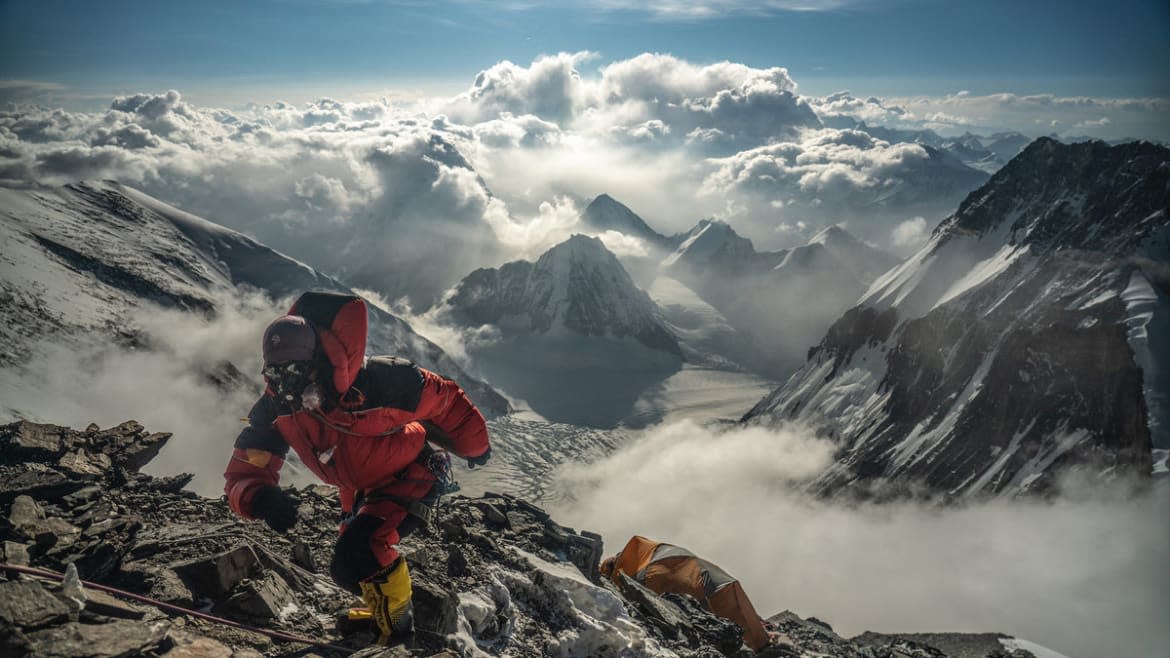
On May 29, 1953, Sir Edmund Hillary and Sherpa mountaineer Tenzing Norgay became the first two people to summit Mount Everest, the highest peak in the world. But... what if they weren’t?
It’s not just a historical hypothetical, but one of climbing lore’s greatest mysteries. Now, it’s a search-and-rescue mission, too, and the subject of the new National Geographic special, Lost on Everest, premiering Tuesday.
In June of 1924, explorers Andrew “Sandy” Irvine and George Leigh Mallory disappeared during an attempt to be the first pair to summit Everest. They were last spotted 800 vertical feet from the top, before never being seen nor heard from again.
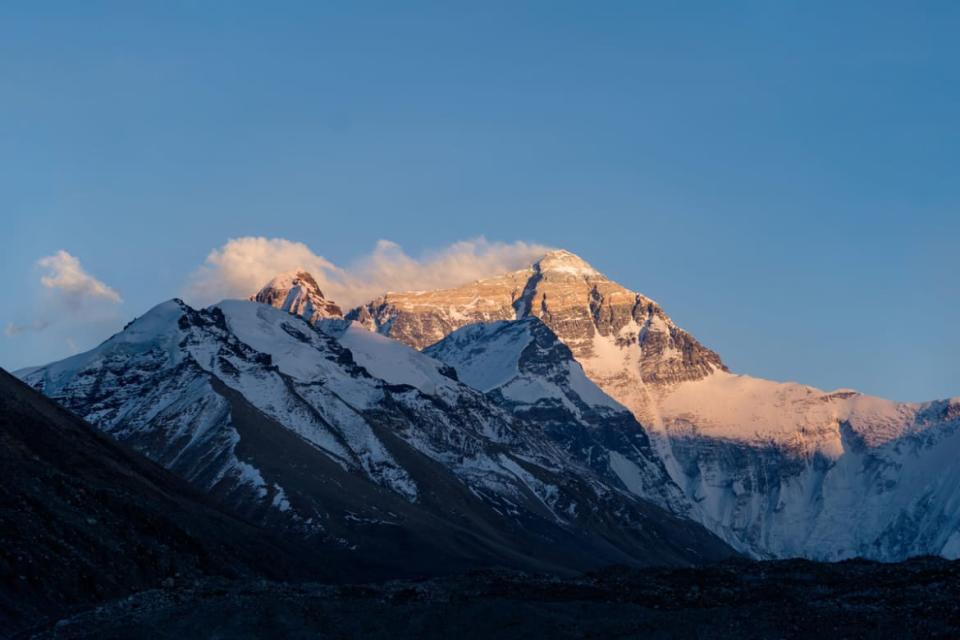
Sunlight touches the top of Mt. Everest.
As the decades passed, Everest experts began to wonder if maybe the pair actually had reached their goal and been the first to summit, armed with scattered eyewitness accounts of what might be their bodies lying frozen in the tundra and carefully plotted maps and photographs of where they were likely to have fallen to their deaths.
More, it was known that they carried a Kodak camera with them on their expedition. If they had reached the peak, surely they would have taken a photo above the clouds.
If their bodies could be located, film from that camera could potentially rewrite history. One expedition in 1999, using all the clues collected over decades, found Mallory’s body on the first day of searching. Two decades later, there’s been enough evidence to warrant a search for Irvine—and that camera—again.
Lost on Everest chronicles that search for “a needle in the haystack,” as photographer and mountaineer Renan Ozturk tells The Daily Beast. He and adventurer Mark Synon led the expedition to, after nearly 100 years, rescue Irving’s body and camera, and with them solve a mystery that’s haunted climbers for years.
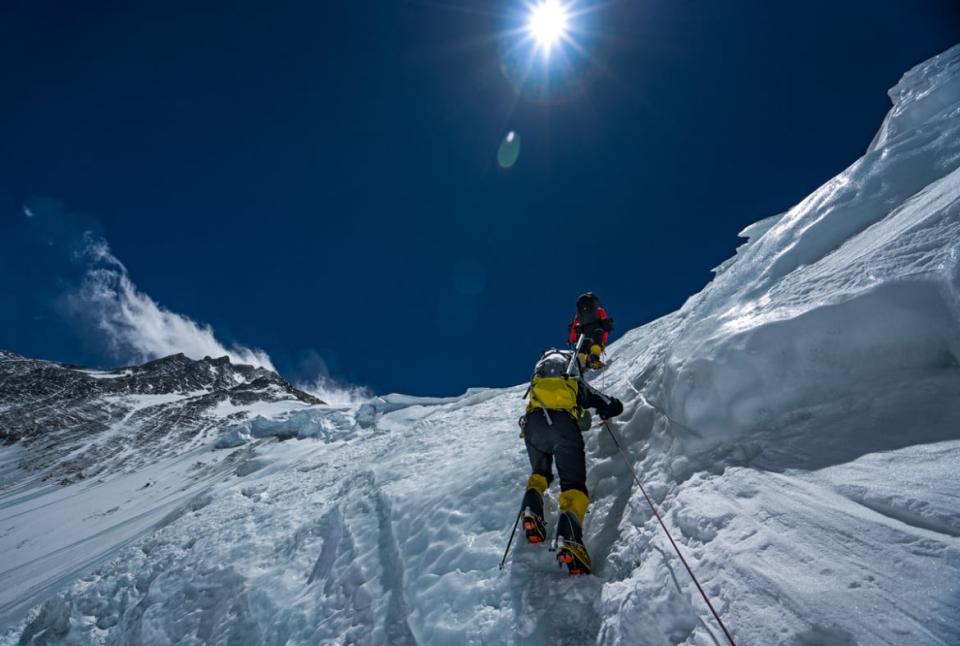
Team members climb Mt. Everest during an expedition to find Sandy Irvine's remains.
What they never expected, however, was that in the process they would also be documenting what it was like on the mountain in the midst of a notorious media frenzy.
As photos of endless queues of climbers stalled in a long wait to summit were beamed down to earth, the pile-up in one of the most lethal regions of the trek was branded “a conga line in the death zone.” Those embroiled in that dance with fate were branded alternately as selfish for tarnishing the pristine, sacred peak and foolish for being so cavalier. It was one of the deadliest Everest seasons on record.
“We wanted to give a little bit more of a rounded perspective on what it was like rather than just seeing one conga line photo of people go into the summit and, you know, all the hissing and disgust,” Ozturk says.
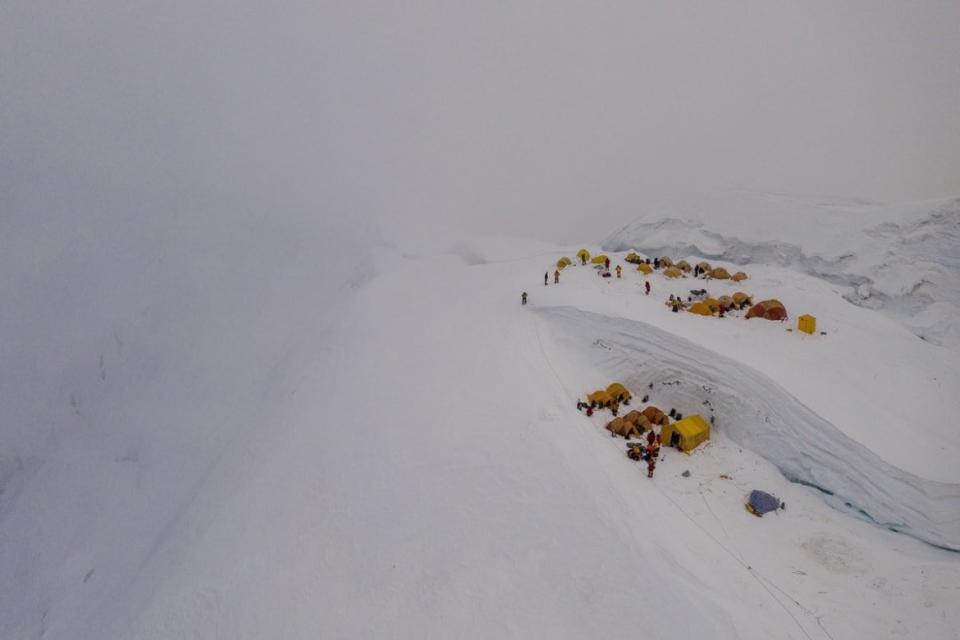
Just before a storm, tents from several expeditions huddle against the snowy slope in this drone shot of the North Col camp at about 23,000 feet. But the hurricane-force winds that followed proved too strong, blasting down every tent. At least one was carried hundreds of feet into the air.
A crucial tool in that endeavor was revolutionary drone technology he used to capture Everest like it’s never been photographed before. Despite battling a wall of physical fatigue and some of the most extreme weather he’s endured, he was able to fly a drone from a 23,000-foot altitude and photograph the mountain from a cloud-line view of 28,300 feet, uncharted territory when it comes to documenting the most famous peak in the world.
The images were invaluable on the mission to, hopefully, locate Irving, but also provide researchers with visual information they’ve never been able to access back on land. (And the rest of us get some really cool photos to gawk at.)
Ozturk’s photos are scattered throughout the article, including an exclusive image at the top, as well as this exclusive clip of Ozturk and his team battling the elements: hurricane winds whipping upwards of 100 miles per hour.
Ahead of Lost on Everest’s premiere Tuesday, we spoke to Ozturk about the possibly historic search-and-rescue effort and what it was really like on the mountain during the notoriously deadly season.
It was kind of wild to watch this and be whisked away on this Everest adventure after being stuck home for months.
Absolutely. The season was pretty quickly canceled this year. And last year’s season was heralded as the year that broke Everest, because of the viral photos that went around of the lines. I think it really put a bad taste in people's mouth about Everest and the climbing industry in general, so we're excited to show something that gives a little bit more of an in-depth narrative than just the sensationalist Everest content that you're used to seeing.
Had you done Everest before this expedition?
I had never done Everest. Myself and Mark, we consider ourselves anti-Everest people, because we didn't really consider it true exploration. We’re sort of haters, for lack of a better way of putting it.
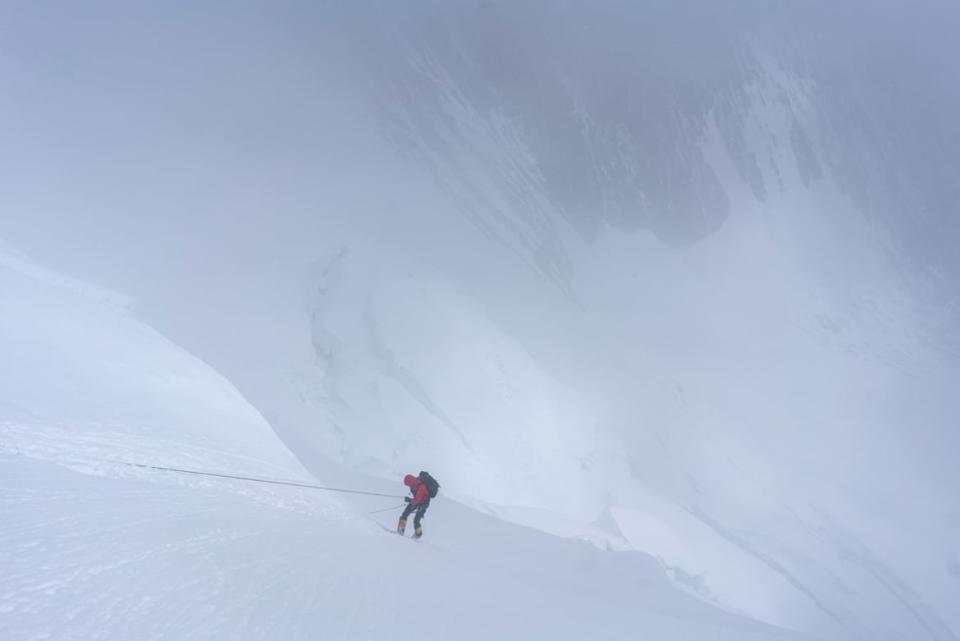
A team member during the expedition to find Sandy Irvine's remains on Mt. Everest, in attempt to solve one of the mountain's greatest mysteries: who was the first to summit Mt. Everest?
What about this mission changed your mind and got you to do it?
This story seemed like a way to get a deeper look into what it was and what it wasn't about, and just go to Everest without the goal of climbing it, but understanding it.
Can you put how hard it was in perspective?
We went to the summit, came down, and did the search in the same 40-hour, sleepless push. During that time we were the only people on the mountain on either side, in what was one of the busiest years in history, filled with death and destruction. I keep describing this moment at the end of the expedition where we were the only people up there. There was just a way of looking at the chaos, but also being separated from it when you're not within it at the moment. It’s like an exhibit. Like a wax museum, frozen in time and you're just checking it out, walking through the rubble.
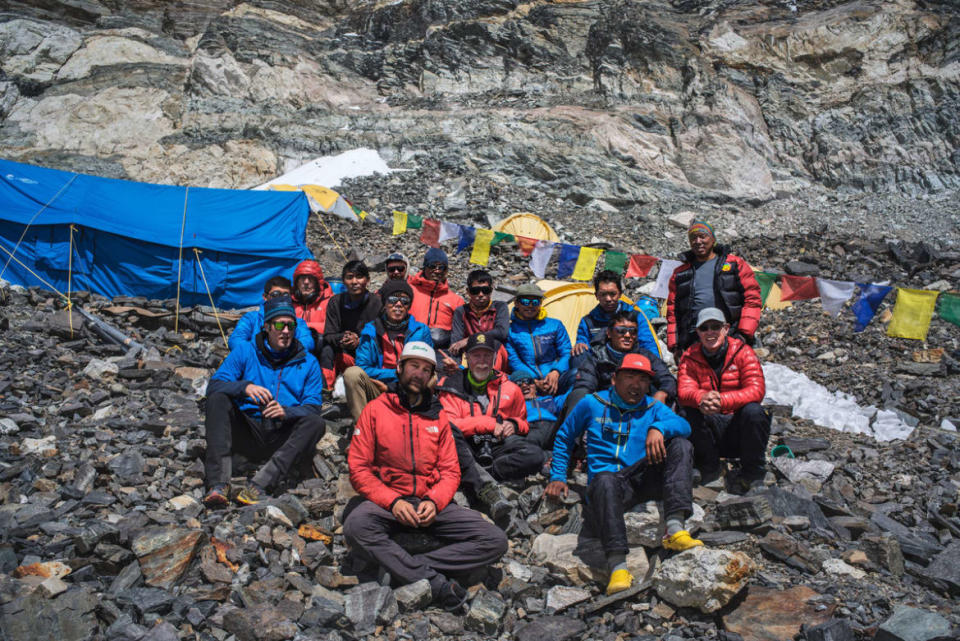
So summiting after that crowd had already left made the experience different.
I think we were both really struck by how powerful that was. That was the lasting memory, more than the trash and the crowds. That combined with this reverence for early explorers that we were on this murder-mystery detective story to figure out what happened to them. With all the media that was getting put out, we wanted to give a little bit more of a rounded perspective on what it was like rather than just seeing one conga line photo of people go into the summit and, you know, all the hissing and disgust.
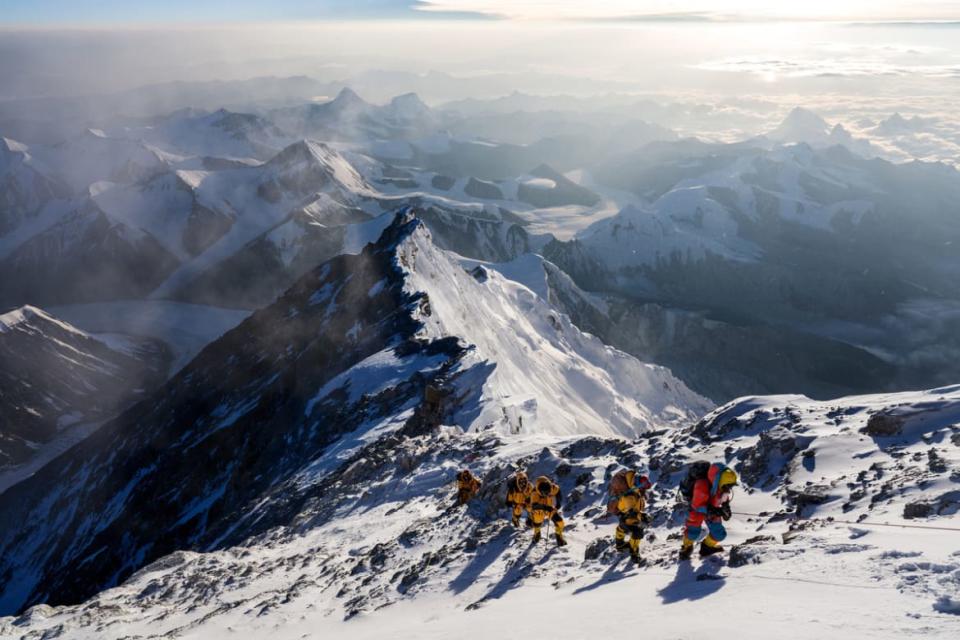
Team members during the expedition to find Sandy Irvine's remains on Mt. Everest, in attempt to solve one of the mountain's greatest mysteries: who was the first to summit Mt. Everest?
And that wasn’t your experience at all.
It's just a hard thing when you're a professional climber and the entire world judges you upon this one mountain, because that's all they know of climbing. That thing is just not how it is. We wanted to do our part to shape the perception of what it is and what it isn't.
Without spoiling anything, how optimistic were you going into this about finding Irving’s body?
We definitely had a good amount of optimism. At the same time, as soon as you hit base camp your body starts to deteriorate immediately, and there are all these huge factors like weather. Then the feasibility of even getting to the search site on a day where it's safe. Factors begin to stack against you more and more, and you realize how hard it is. Even though we had the secret weapon, which was this technique of using drones at high altitudes to do these photo grid stitches that we could use to look for anomalies.
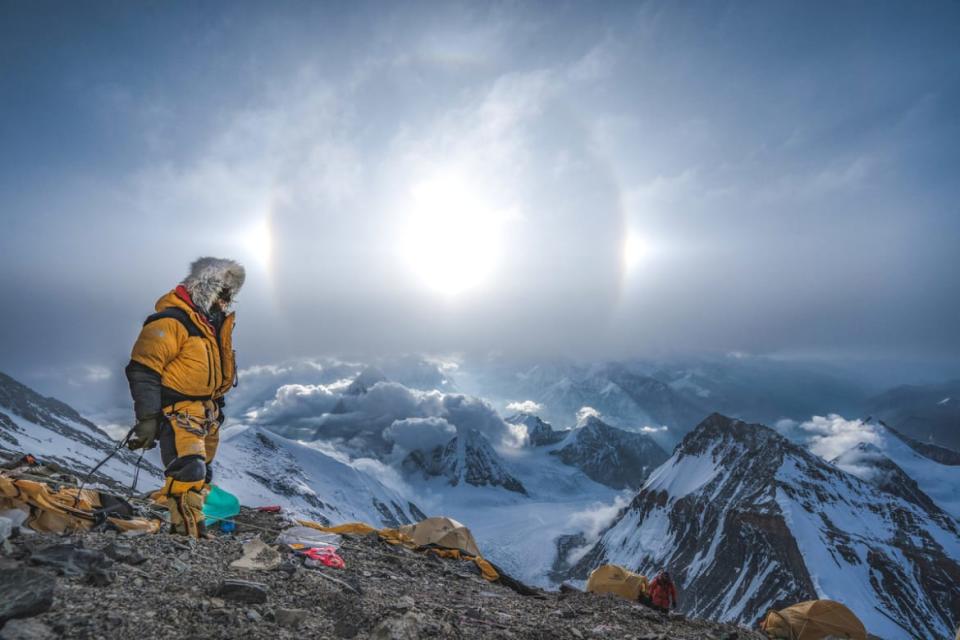
Renan Ozturk remains on the mountain after the rest of the team descends, following the hectic search for Sandy Irvine's remains.
You flew a drone up to 28,300 feet. What is the significance of that?
It's not only just searching for a body. The more you can bring back from these expeditions to share, that's what really makes exploration meaningful for me. I think this was the perfect inflection of technology combined with adventure, where now we have these drones that, maybe they were capable [before], but no one had quite tried it to this extent.
How hard was it to get those images?
There's a lot of things that went wrong and I think we got really lucky to get the little weather windows that we did to be able to fly. And they were malfunctioning every which way. But you could still, with numb, shaking hands, push them to these incredible points. It was a really, really exciting moment for all of us, realizing this pipe dream of an idea to search for the body, but also create these images. That it's actually possible. I wonder how it's going to progress in the future. It's just so hard.
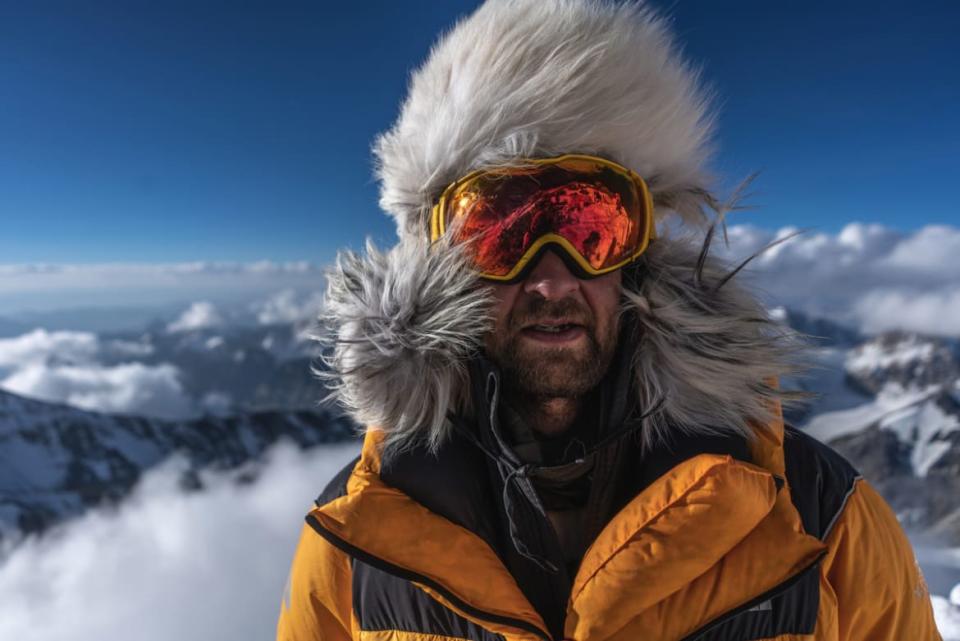
Renan Ozturk during expedition to climb Mt. Everest in search of Sandy Irvine's remains.
I don’t think people appreciate how difficult it would be to maneuver a drone, like, on Everest.
Even though flying one of those drones now, they make it pretty easy to do, it's still just hard to have any sense of acuity or drive to do it when your body is actively dying up there. Especially from the point we were flying, which was about 23,000 feet where we took off. It's just hard to function. I feels like you have like one of the biggest blues of your life. You wake up with like a combined giant hangover and a flu. You don't want to move or do anything other than rest and hydrate. So to engage in an activity that's kind of like playing an intricate video game, and the consequences of littering or hitting someone are pretty great. I found it really stressful.
Get our top stories in your inbox every day. Sign up now!
Daily Beast Membership: Beast Inside goes deeper on the stories that matter to you. Learn more.

